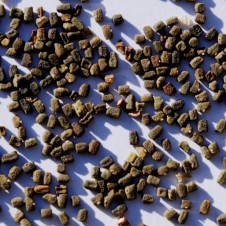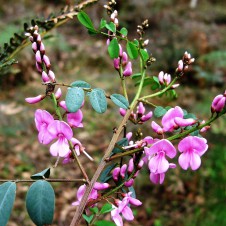General Description: A shrub, to 1.5 m tall, with large, divided, blue-green leaves, and sprays of pale purple, pea flowers.
Flowers and Fruit: Pale purple, pea flowers, to 6 mm wide and deep, from August to December. Fruit is a narrow, hairless pod, to 45 mm long.
Site Preference and Tolerances: Common on the northern slopes of the Divide but rare below 500mm rainfall. Is drought tolerant but will sometimes die back, is tolerant of acid soils but not of heavy frosts which cut back foliage and can kill young plants. Once plants are established they are much more frost resistant. Prefers semi-shade and will flower even in reasonably shaded positions. Prefers rocky, poor and shallow well drained soils.
Life Span: Fast growing and short-lived (less than 20 years)
Wildlife Value: Seeds and flowers provide food for insects and birds. Butterfly attracting.
Other Values and Uses: A very attractive, open shrub with intensely mauve coloured flowers and interesting delicate looking foliage. Responds to watering and can be coppiced (cut back hard) to encourage regeneration. Particularly attractive when planted in groups. Useful for general land protection works and improves soil fertility. Aborigines used the crushed roots to poison fish. The blue dye from the flowers was also used.
Other Common Names: Australian Indigo, Hill Indigo, Native Indigo
Germination Information: Need to break seed dormancy and heat treatment using hot water is best for this species, do not use just boiled water. Pour hot water (can just put your finger in it briefly) over the seed and leave it for at least half an hour to ensure the seedcoat is cracked and the seed has taken in some water.


